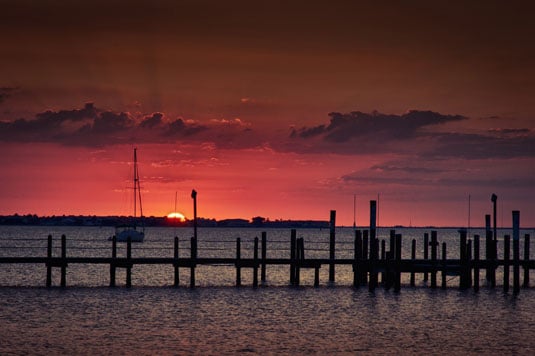Nature is often chaotic. When you travel through a lush forest or craggy mountains, there is no sense of order. Animals often exhibit the same random nature, although many of them do line up in artistic patterns when traveling or migrating.
Humans, on the other hand, don’t relate well to chaos. We prefer some order in our lives and the way things are arranged. That’s why it’s important to have some sort of organization to your photograph, a path viewers can follow to make sense of nature’s chaos.
If you use the Rule of Thirds, you know that you divide the scene into thirds vertically and horizontally. If the most important information is above the horizon, such as a scene with a beautiful cloudscape (see the figure), place the horizon in the lower third of the image.
Conversely, if the most important information is below the horizon line, such as a scene with a still lake with wonderful reflections, place the horizon line in the upper third of the image. If you pay attention to placement of the horizon line, the viewer knows where to look.


